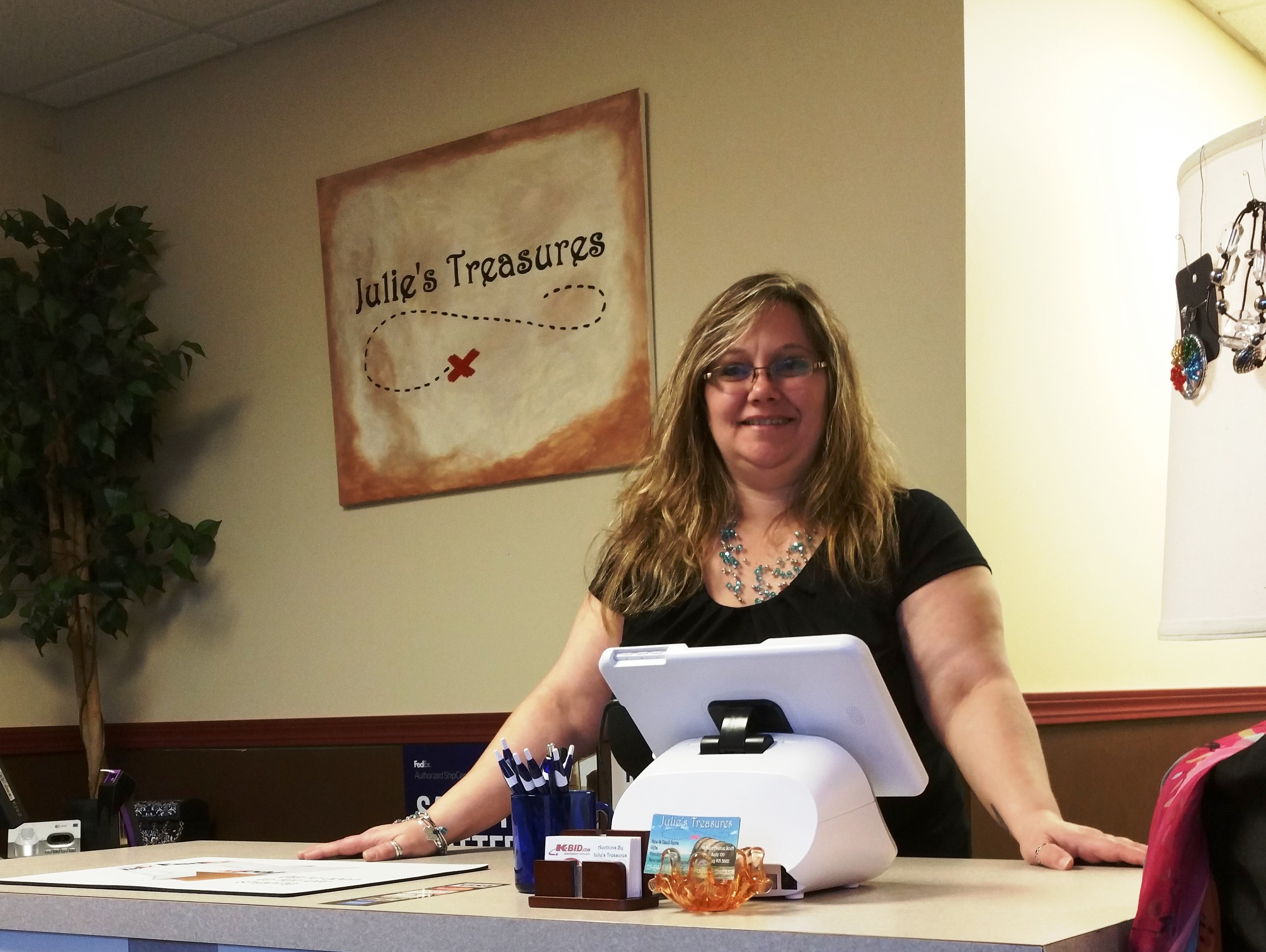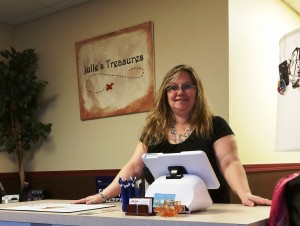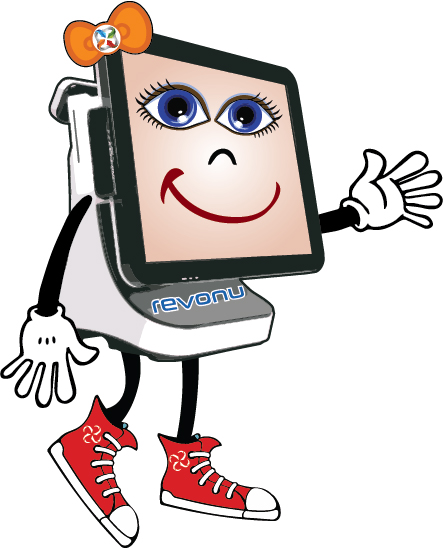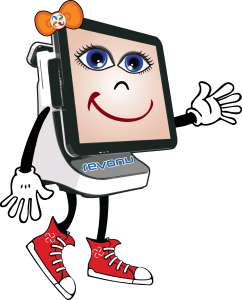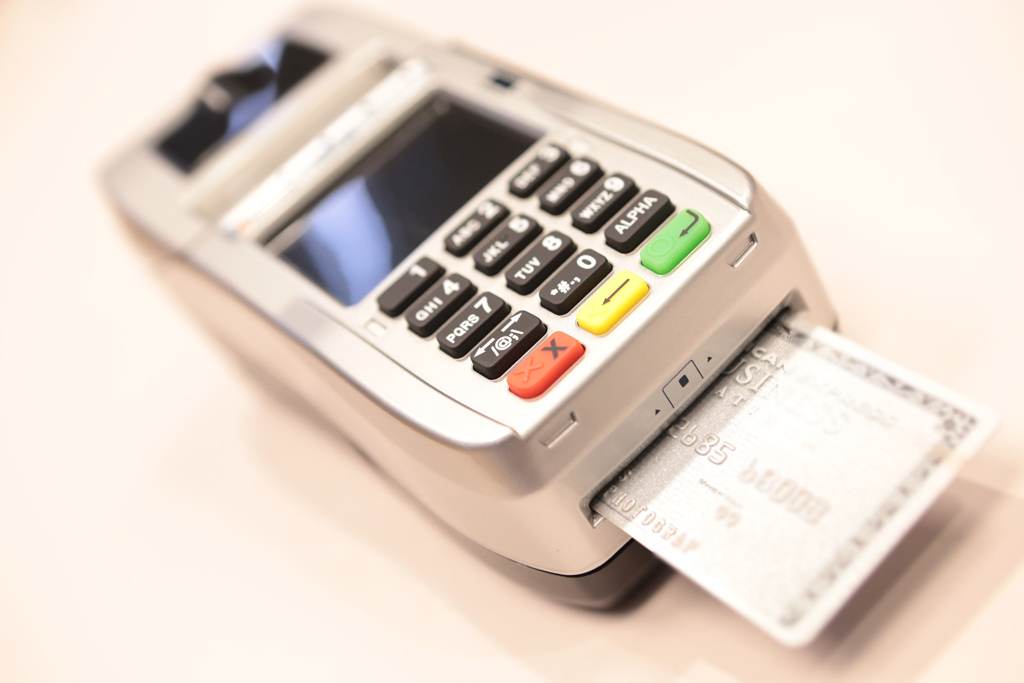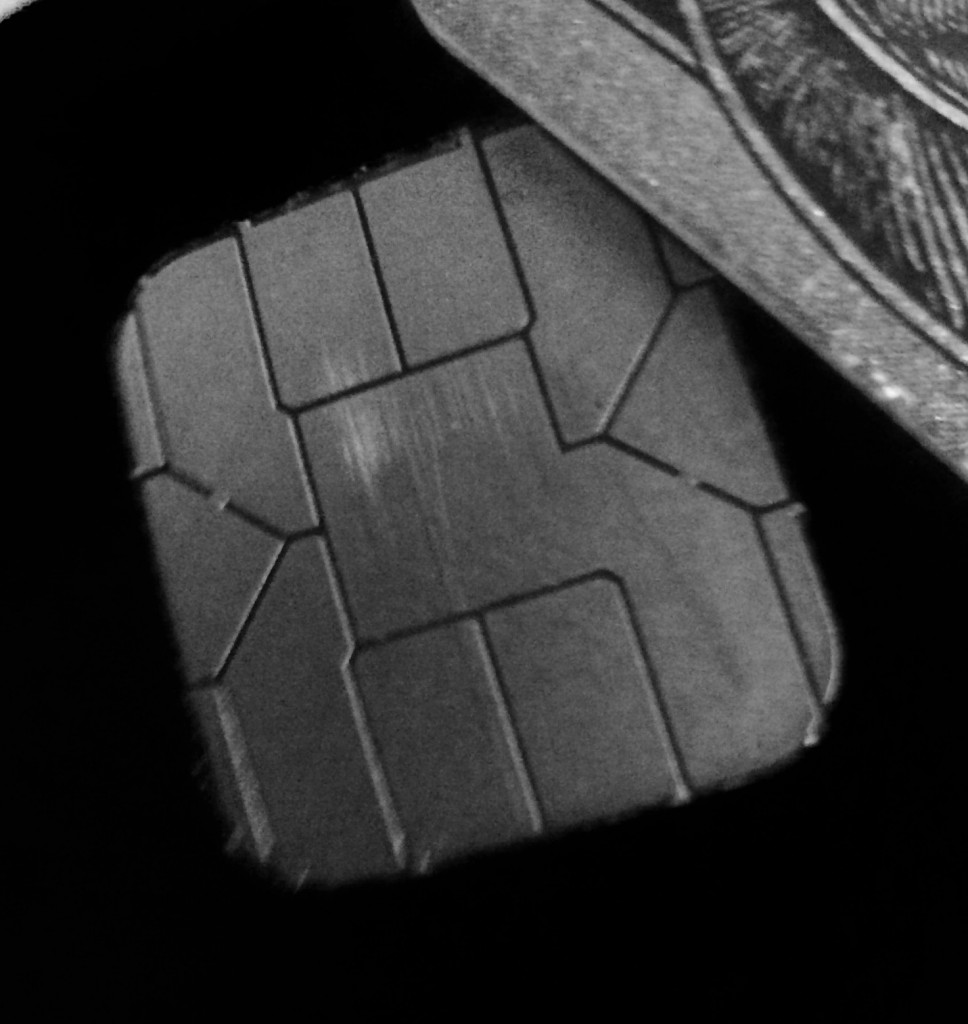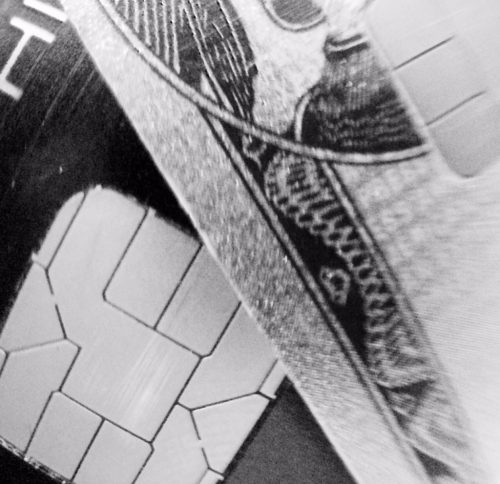Julie’s Treasures and REVONU POS: Aye, the Perfect Match!
REVONU POS is making a huge impact on the POS community, and to talk about why, we asked Julie Nelson, owner of Julie’s Treasures in Minnesota, a retail consignment store, what she thinks about her new REVONU POS system and COCARD.
COCARD: What made you choose COCARD for your payment processing?
Julie: COCARD was recommended to me by the previous owner.
COCARD: Was the previous owner already using REVONU?
Julie: No, he didn’t have a POS system to run the business. But I definitely wanted to utilize one. The previous owner mentioned that COCARD had POS systems available and I really liked REVONU.
COCARD: So it seems like REVONU has made your business easier to manage! Could you give me some examples as to how REVONU has improved the operation of your business?
Julie: REVONU has made a positive difference! After getting REVONU, it has been easier to keep track of sales as it can sometimes be difficult to keep track of consignors. We also have two different shipping services that are out of the office, so we rely on REVONU to keep those organized. It is very important that we keep track of who we are selling to and who to pay!
COCARD: Would you say REVONU does a good job at catering to a retail business, such as Julie’s Treasures?
Julie: Yes
COCARD: Is it relatively easy for you to keep your inventory organized using REVONU?
Julie: Yes
COCARD: If you could see one feature be added/changed to REVONU what would that be?
Julie: Honestly, I haven’t encountered any issues!
COCARD: What is your favorite aspect of REVONU?
Julie: My favorite aspects are the sales tracking and the back office management options as well has being able to get support for REVONU and my merchant services account in one place with one call!
COCARD: Thank you Julie for taking the time to speak with us today!
Is REVONU POS right for your business? Give us a call to set up a demo, we love to show it off! 800-318-1819
Read MoreRead More
Pssst! Did You Know That COCARD Has a Live Chat?
Do you have any burning questions? Not feeling like picking up the phone? Would you like some more information about credit card processing, POS systems or have a question about your merchant account with COCARD? Then chat away!
I’m REVONU your POS system pal, and I’m here to tell you about our brand new live chat feature. It’s conveniently located on the bottom right corner of the screen on our website, www.cocard.info.
Look in the right hand corner of your screen right now, click on the blue box and one of our fanatical support members will answer any questions you may have, so don’t hesitate to chat us! Hope to talk to you soon!
Read MoreRead MoreEMV Pocket Glossary
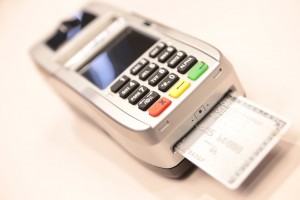 With the liability shift here, we know that you’ve already got a lot on your plate. So we’re going to just take it easy and go over a few terms you may have already seen or will see as you continue to learn about EMV. This list can serve as a simple pocket reference during the transition. Print it out even, and refer to it as needed when reading your next article or blog post about EMV. We want the transition to be worry-free.
With the liability shift here, we know that you’ve already got a lot on your plate. So we’re going to just take it easy and go over a few terms you may have already seen or will see as you continue to learn about EMV. This list can serve as a simple pocket reference during the transition. Print it out even, and refer to it as needed when reading your next article or blog post about EMV. We want the transition to be worry-free.
EMV: Short for Europay, Mastercard, and Visa, the developers of the card
Chip-enabled card: A credit card enabled with a microchip; also referred to as “chip and pin” or “chip and signature”, depending on the cardholder verification method
Fraud: the criminal use of a person’s credit card information to make unauthorized transactions
With the transition to EMV terminals, the US aims to decrease fraud. The US currently accounts for nearly half of all worldwide fraud. On a positive note, the EU has decreased card fraud by 80% since completing its transition to EMV cards, which means the US transition should be successful.
Liability shift: Starting October 1st the responsibility for fraudulent transactions switched to the party with the least EMV-capable technology
If fraud occurs with a non-EMV bank card, the bank is responsible. If fraud occurs as a result of a merchant’s POS system that can’t accept EMV-cards, the merchant is responsible. Only 20-30% of merchants are expected to use EMV-capable terminals by October 1st, with the remainder throughout the three to five-year transition period. So if you’re not there yet, don’t freak out. COCARD can work with you to determine a POS system that is right for your company’s needs.
Transaction authorization: When a chip card goes through rules set by the card-issuer to determine whether the transaction can be authorized; transactions can be authorized either online or offline
Card authentication: the process of making the card authentic or unique by providing a one-time code for the transaction
If someone does manage to actually steal this code and use it, the transaction would be declined since the code was already used.
Cardholder verification (CVM): how the issuer and merchant verify that the cardholder and the person with the card are one and the same. An EMV-terminal might require a pin, signature, or for low risk transactions, no verification method.
Mag-stripe card: Cards with a magnetic stripe on the back. Much of the world has already switched completely to EMV-cards, and the full-scale transition in the US is currently underway. Cardholder data on mag stripe cards is easy to steal using a simple card reading machine.
Cryptogram: A one-time code created during online authorization; a cryptogram validates that the chip and issuer are not counterfeit
That’s it. We hope that this glossary of terms is short and sweet, and that it provides simple definitions for terms that are often times used when discussing EMV.
And now that October 1st has come and gone we’re sure that your still standing strong. So don’t worry. Instead, continue to read up on EMV and take the information that is most valuable to you as a business owner. If you’ve got any questions, we at COCARD will be happy to assist. Feel free to give us a call at 800-317-1819.
Read MoreRead MoreMeet a member of YOUR COCARD support team, Salvador
 Salvador was born in San Bernardino, CA and raised in Salt Lake City, UT. He now makes his home in Duluth, GA with his wife, Nelly and daughter Evelyn. Salvador plays soccer, hikes and loves taking pictures (mostly of Evelyn).
Salvador was born in San Bernardino, CA and raised in Salt Lake City, UT. He now makes his home in Duluth, GA with his wife, Nelly and daughter Evelyn. Salvador plays soccer, hikes and loves taking pictures (mostly of Evelyn).
He is a great cook and thankfully likes to eat what he cooks!
When I asked Salvador if he could meet anyone in the world who would it be and why he responded: myself, it would be very interesting to see me through someone else’s eyes.
Around the office Salvador is known for his relentless testing abilities, we like to think of this as his super power. If we have new technology or equipment we are beta testing we want Salvador to do the testing so that we can repair, replace or upgrade before our customers ever use the technology or equipment. He really is a super hero!
Call our support team and ask for Salvador, he is ready to support your POS and your merchant account with one call.
Read MoreRead MoreDon’t Get SLAMMED!
Dictionary
slam
noun ˈslam
Definition of SLAM
1
: switching business owners from their current merchant services provider to another service provider without the business owners knowledge or authorization.
Examples of SLAM
“He/she called for software support and was slammed by another provider”
Don’t be slammed
To Learn More About SLAM
Call COCARD at 800-317-1819 or email support@cocard.info
Read MoreRead MoreA Sky Without Limits, or Infinity and EMV
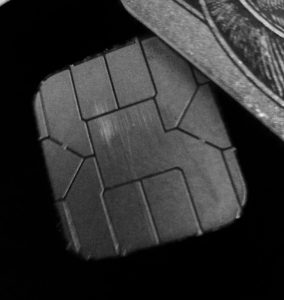 Chicken Little once said that the sky is falling. Yet it still remains intact above us. So while the transition from magnetic stripe to EMV might seem like a shift of cataclysmic proportions, the sky is not falling. Your company will successfully transition from magnetic stripe to EMV (many already have), and next time you look outside your window, you’ll see the billowy clouds resting above, and not on the ground.
Chicken Little once said that the sky is falling. Yet it still remains intact above us. So while the transition from magnetic stripe to EMV might seem like a shift of cataclysmic proportions, the sky is not falling. Your company will successfully transition from magnetic stripe to EMV (many already have), and next time you look outside your window, you’ll see the billowy clouds resting above, and not on the ground.
Yet we also understand that with anything new comes fear. It’s normal. So we’ve put together a few facts to calm your nerves. We want you—the sagacious business owner that you are—to continue to make calm, smart decisions over the course of the transition.
Are you with us? Well, here goes:
- A transaction using EMV technology will take around 60 seconds compared to under 2 seconds with a magnetic stripe card. Magstripe cards are swiped and provide the terminal with the credit card number and expiration date, which can be easily copied by a card reader. EMV terminals, on the other hand, require customers to “dip” the chip and verify customer data, which takes just a short while longer. During this time, the Chip and Terminal begin a conversation. Chip says, “Please authorize this transaction.” Terminal replies, “I’ll need to make sure you’re valid. I’ll also need to provide your card with a special code unique to this transaction because we can’t have any fraudsters trying to take your info.” Chip responds, “Sounds great.” Terminal says, “Now please sign, or enter your pin number.” EMV takes a few more seconds than a magstripe transaction, but your data is more secure.
- Don’t panic. Although EMV has been adopted in Europe for over a decade, cards in the US still have a magnetic stripe. Card companies have accounted for the ongoing transition by allowing terminals to still accept magnetic stripe cards. Card issuers expect the full transition to take anywhere from three to five years.
- The term “liability shift” sounds pretty intense, like if you’re not prepared, the earth will shift, and you’ll fall off the edge of it. Oh, Copernicus. Well, flat-earth jokes aside, the liability shift is not that cruel. It is simply a method to eliminate fraud. Starting October 2015, the party—either the business or banking institution—with the lesser technology will be responsible for the cost of fraud. Instead of thinking of the liability shift as a way for others to make money off of your hard work, think of it instead as a way to ensure all parties are working together to eliminate fraud, which cost US consumers $16 billion last year alone.
In short, the sky is not falling, and EMV is not the end of the world. Instead, it seems to be the beginning to new possibilities for business owners. It might be an uncharted territory, but EMV will provide companies with the tools to chart their own course by allowing them to directly address fraud, a concern that leaves many involved feeling powerless. So next time you look at the sky, we at COCARD hope that you view it with possibility, and nothing less than that.
Read MoreRead MoreEMV FAQs
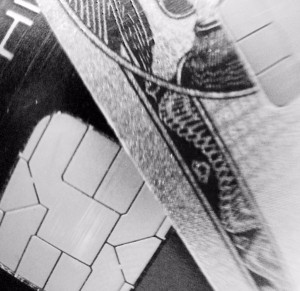 Watch out—the future has arrived. And they call it EMV. As the target date for businesses to accept EMV payment cards draws near, make sure your business is ready to transition seamlessly from magnetic stripe cards to EMV. October 1st is upon us. Are you ready?
Watch out—the future has arrived. And they call it EMV. As the target date for businesses to accept EMV payment cards draws near, make sure your business is ready to transition seamlessly from magnetic stripe cards to EMV. October 1st is upon us. Are you ready?
This list of FAQs will help you answer lingering questions and stay abreast of new developments with EMV technology.
What does EMV stand for?
It is an acronym for its developers Europay, Mastercard and Visa.
What’s the main difference between the cards we use now and EMV cards?
Magnetic stripe cards are the cards currently used in the United States and have a magnetic strip on the back. These cards are swiped through a card reader and contain static financial information that can be easily duplicated by card readers. EMV cards, on the other hand, contain a microchip that produces a new code with each transaction, preventing fraudsters from gaining access to sensitive data on the card. EMV cards are therefore more secure than magnetic stripe cards, and are responsible for a worldwide decrease in fraud.
How will switching to EMV directly benefit my business?
Great question. EMV will benefit your business threefold. First, your risk of chargebacks based on fraudulent transactions is greatly reduced. Whereas banks bore the brunt of the financial weight for fraud in the past, companies that have not adopted EMV technology will now be held accountable starting October 1st, when the liability shift starts. Adopting EMV technology will protect your business from costs associated with fraud. Second, as technology evolves faster than you can say Darwin, EMV is simply the beginning. Most of the hardware that accepts EMV will also allow your business to accept payment innovations such as mobile apps (i.e. mobile couponing and loyalty programs) and contactless payments. Third, you will be able to accept payment from visitors from other countries. Much of the world has already adopted this technology and no longer uses magnetic stripe cards. So prepare your business to increase profits by switching to a payment technology that more people can use.
I’ve been hearing the term “liability shift” a lot lately. What exactly is it?
It is when liability for card fraud switches from banking institutions to merchants. On October 1, 2015, businesses that aren’t updated to accept EMV cards will be held responsible for card swiped transactions on EMV capable cards that are found to be fraudulent. And penalties can be costly, particularly for small businesses. However, if your business is EMV-compatible, you will not be held accountable for fraudulent transactions.
As a small business owner, every penny counts. How much will it cost me to install an EMV-capable terminal?
EMV card readers cost between $400 and $700 but are often discounted through payment processors such as COCARD. Speak with us today—your EMV solution might even be free.
One thing to remember is that as the United States fully transitions to using EMV technology, cards will include both the microchip and magnetic strip. The process is expected to take anywhere between three and five years.
COCARD aims to develop our reputation as experts on EMV. We will continue to keep you posted on new developments and new ways of looking at this groundbreaking technology.
Read MoreRead MoreAre You Ready for EMV?
 You are probably hearing a lot about EMV in the news and maybe even receiving a few scary calls from merchant service providers who imply that EMV has something to do with PCI Compliance. For the record EMV has NOTHING to do with PCI Compliance and no matter what software you are running on your POS COCARD can manage your EMV. Relax, COCARD is ready for EMV and we are here to help YOU be ready too.
You are probably hearing a lot about EMV in the news and maybe even receiving a few scary calls from merchant service providers who imply that EMV has something to do with PCI Compliance. For the record EMV has NOTHING to do with PCI Compliance and no matter what software you are running on your POS COCARD can manage your EMV. Relax, COCARD is ready for EMV and we are here to help YOU be ready too.
A little background: EMV stands for Europay, MasterCard and Visa; it is the global standard for cards equipped with computer chips and the technology used to authenticate chip-card transactions. Have you heard about all the data breaches in the last few years? EMV is the card association’s answer to these breaches, the technology has been used in Europe for more than 10 years and they have seen a drastic reduction in credit card fraud.
What happens?
In the beginning your exposure will be minimal because the only liability for fraud will be with cards that have chips implanted. However, as time goes on, and if EMV becomes the new standard, your exposure will increase. If a chip card is used at a business that has not changed its system to accept chip technology and this chip card is fraudulent then the counterfeit card can be successfully used and cost of this fraud will fall back on the merchant.
What does this new technology mean to your business?
The switch to EMV means adding a new in-store technology to your current processing system or not. Chances are you may already be EMV ready but in either case don’t worry, COCARD is here to help! Most importantly the EMV technology means greater protection against fraud in your business.
For ongoing updates and the most current information about EMV, PCI, card association updates and fraud alerts like us on Facebook and follow us on Twitter.
Read MoreRead More


